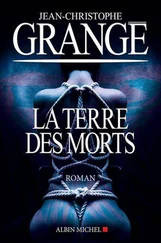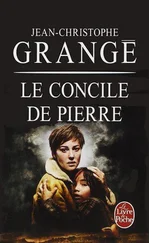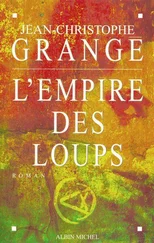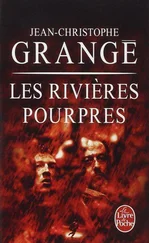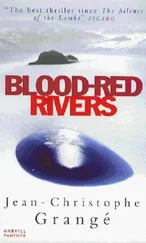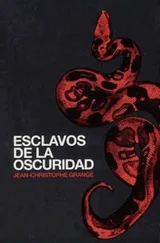To his left, a half-open door was labeled WAITING ROOM. Farther on, to his right, another door was wide open. It was presumably the surgeon's consulting room. First he noticed its walls, covered with soundproofing made of a mix of plaster and straw.
Then its floor. Photographs were scattered across it. Faces of women who were bandaged, swollen, stitched. The final confirmation of his suspicions. Someone had searched the place.
A crack could be heard from the other side of the wall.
Paul froze, his fingers gripping his gun. In a split second, he realized that he had lived only for this moment. The length of his existence did not matter. Nor did life's pleasures, hopes and disappointments. All that counted was heroic courage. He knew that the next minute would give his stay on earth its meaning. A few ounces of bravery and honor in the scales of his soul…
He was leaping toward the door when the wall exploded.
Paul was thrown to the far side of the corridor. Fire and smoke were filling it. By the time he noticed a hole no bigger than a plate, two more shots ripped through the soundproofing. The straw in the plasterboard caught fire, turning the corridor into a tunnel of flame.
Paul curled up on the floor, his neck singed by the blaze, pieces of plaster and straw tumbling down onto him.
Almost at once, silence fell. Paul looked up. In front of him, there was nothing but a heap of rubble, revealing a clear view of the surgical suite.
They were there. Three men dressed in black commando garb, strapped with cartridge belts and wearing balaclavas. Each of them was holding a SG 5040 grenade launcher. Paul had only seen them in a catalogue, but he recognized the model at once.
At their feet lay a corpse in a dressing gown. Frédéric Gruss had paid the final price for the risks of his trade.
Automatically Paul felt for his gun. But it was too late. His stomach was frothing with blood, seeping red streams into the folds of his jacket. He felt no pain he supposed this meant that he had been fatally wounded.
Sharp crunching sounds could be heard to his left. Despite his deafened ears. Paul heard with unreal clarity the feet treading down across the rubble.
A fourth man appeared in the doorway. The same black figure, hooded, gloved, but with no grenade launcher. He walked over and looked at Paul's wound. Then he pulled off his hood. His face was painted all over. The brown curves and whirls on his skin depicted the maw of a wolf. His mustache, brows and eyes were all lined with black. This had presumably been done using henna, but it looked like the makeup of a Maori warrior.
Paul recognized the man in the photograph. Azer Akarsa. He was holding a Polaroid photo: a pale oval surrounded by black hair. Anna Heymes just after her operation.
So the Wolves were now going to be able to find their prey. The hunt would go on. But without him.
The Turk knelt down. He looked straight into Paul's eyes, then softly said, "The high pressure drives them mad. Pressure wipes out pain. The last one was singing when her nose was cut off."
Paul closed his eyes. He did not really understand what was being said, but he was sure of one thing: this man knew who he was and had already been informed about Naubrel's visit to his laboratory.
In flashes, he glimpsed the wounds of the victims, the cuts on their faces. A homage to ancient stone, signed AzerAkarsa.
He felt the bubbles rise up to his lips. It was blood. When he opened his eyes again, the Wolf was pointing a.45 at his forehead.
His last thought was for Céline. And the fact that he had not had time to call her before she left for school.
Roissy Charles-de-Gaulle airport. Thursday, March 21, 4:00 PM. There is only one way to conceal a gun in an airport.
Firearm enthusiasts generally think that a Glock automatic pistol, essentially made of polymers, can slip through X-rays and metal detectors. Wrong. The barrel, repeater, firing pin, trigger, clip spring and a few other parts are still made of metal. Not to mention the bullets.
There is only one way to conceal a gun in an airport. And Sema knew it.
She remembered how as she stood in front of the windows in the airport's shopping mall while waiting to board Turkish Airlines flight TK 4067 to Istanbul.
First she bought a few clothes and a travel bag-there's nothing more suspicious than a passenger with no luggage-and then some photographic equipment. A Nikon F2 camera, two lenses, one 35- to 70-mm and the other 200-mm, then a small box of tools specially for this make, plus two lead-lined bags to protect film during security checks. She carefully put them all away in her professional Promax bag, then went to the airport restroom.
Isolated in a stall, she put the barrel, firing pin and other metal parts of her Glock 21 among the screwdrivers and pliers in the toolbox. Then she slid the tungsten bullets into the leaded containers, which block X-rays and make their contents totally invisible.
Sema was amazed at her own reflexes, at her gestures and know-how. Everything was coming back to her spontaneously. Her "cultural memory," as Ackermann had put it.
At 5:00, she calmly boarded her flight, which arrived at Istanbul at the end of the day, without being bothered by customs.
In the taxi, she did not dwell on the surrounding countryside. Night had already fallen. A slight shower was casting its ghostly reflections beneath the streetlights, matching the flow of her consciousness.
All she made out were occasional details: a peddler selling ring-shaped loaves: a few young women, their faces encircled by head scarves, melding into the tiles of a bus-stop shelter: a lofty mosque, grim and somber, which seemed to be scowling over the trees: birdcages lined up on a bank side, like hives… It all murmured to her a language that was at once familiar and distant… She turned from the window and curled up on the seat.
She chose one of the most luxurious hotels in the city center, where she merged into a welcome flow of anonymous tourists.
At 8:30, she locked her bedroom door and slumped down onto the bed, where she fell asleep with her clothes on.
***
The next day. Friday March 22, she awoke at 10:00 AM.
She turned on the television at once and looked for a French channel on the satellite network. She had to make do with TVs, the international service for the French-speaking world. At noon, after a debate about hunting in Switzerland and a documentary about national parks in Quebec , she finally got to see TFI news, broadcast the previous evening in France.
As she had expected, mention was made of the discovery of the body of Jean-Louis Schiffer in Père-Lachaise cemetery. But there was other news she had not been expecting: two other bodies had been found that same day in a mansion in the heights of Saint-Cloud.
Sema recognized the building and turned up the volume. The victims had been identified as Fredéric Gruss, a plastic surgeon and owner of the property, and a thirty-five-year-old police captain named Paul Nerteaux, from the First Division in Paris.
Sema was horrified.
The commentator went on: No explanation has yet been found for this double murder, but it may be linked to the death of Jean-Louis Schiffer. Paul Nerteaux had been investigating the murders of three women, committed over the past few months in the Little Turkey quarter. During his inquiries, he consulted the retired inspector, who specialized in the tenth arrondissement…"
Sema had never heard of this Nerteaux- a young, rather good-looking fellow with hair like a Japanese man but she could easily deduce what had happened. After pointlessly killing three women, the Wolves had finally found the right lead, which had taken them to Gruss, the surgeon who had operated on her during the summer of 2001. Meanwhile, this young cop must have followed the same path that led to the man in Saint-Cloud. He had turned up while the Wolves were questioning the surgeon. The situation had ended in a typical Turkish bloodbath.
Читать дальше

